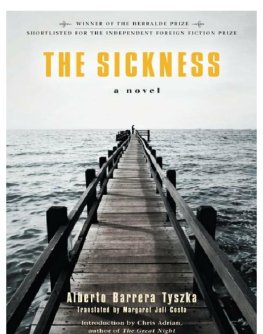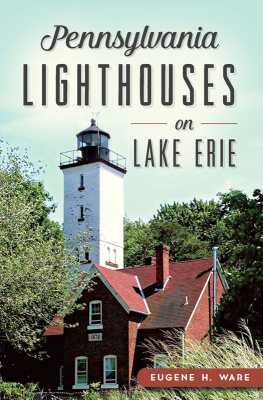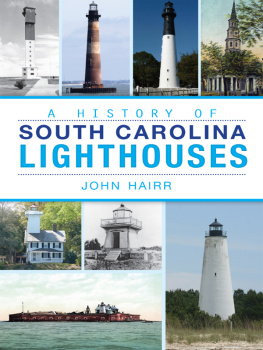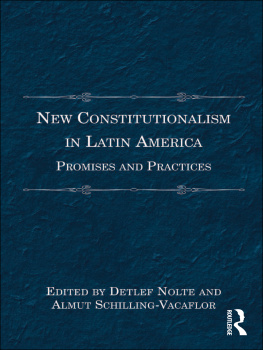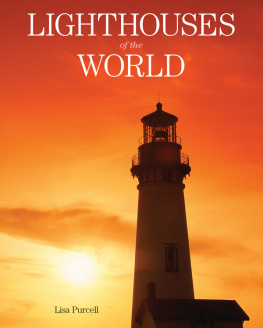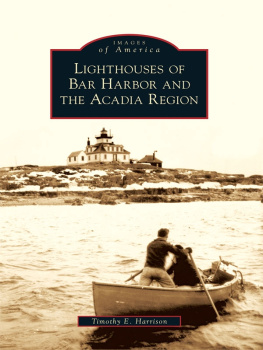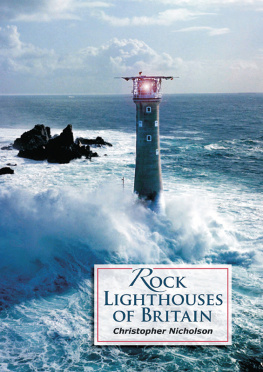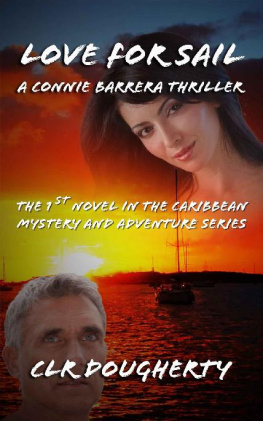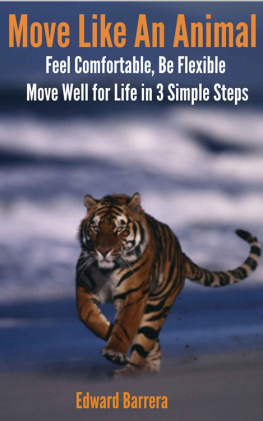Jazmina Barrera - On Lighthouses
Here you can read online Jazmina Barrera - On Lighthouses full text of the book (entire story) in english for free. Download pdf and epub, get meaning, cover and reviews about this ebook. year: 2020, publisher: Two Lines Press, genre: Detective and thriller. Description of the work, (preface) as well as reviews are available. Best literature library LitArk.com created for fans of good reading and offers a wide selection of genres:
Romance novel
Science fiction
Adventure
Detective
Science
History
Home and family
Prose
Art
Politics
Computer
Non-fiction
Religion
Business
Children
Humor
Choose a favorite category and find really read worthwhile books. Enjoy immersion in the world of imagination, feel the emotions of the characters or learn something new for yourself, make an fascinating discovery.
- Book:On Lighthouses
- Author:
- Publisher:Two Lines Press
- Genre:
- Year:2020
- Rating:3 / 5
- Favourites:Add to favourites
- Your mark:
- 60
- 1
- 2
- 3
- 4
- 5
On Lighthouses: summary, description and annotation
We offer to read an annotation, description, summary or preface (depends on what the author of the book "On Lighthouses" wrote himself). If you haven't found the necessary information about the book — write in the comments, we will try to find it.
On Lighthouses — read online for free the complete book (whole text) full work
Below is the text of the book, divided by pages. System saving the place of the last page read, allows you to conveniently read the book "On Lighthouses" online for free, without having to search again every time where you left off. Put a bookmark, and you can go to the page where you finished reading at any time.
Font size:
Interval:
Bookmark:

ON LIGHTHOUSES
ON LIGHTHOUSES
Jazmina Barrera
Translated from Spanish
by Christina MacSweeney

Originally published as Cuaderno de faros
2017 by Jazmina Barrera
c/o Indent Literary Agency
www.indentagency.com
Translation 2020 by Christina MacSweeney
Two Lines Press
582 Market Street, Suite 700, San Francisco, CA 94104
www.twolinespress.com
ISBN 978-1-949641-01-1
Ebook ISBN 978-1-949641-02-8
Cover design by Gabriele Wilson
Cover photo by Simon Jones / Millennium Images, UK
Typeset by Jessica Sevey
Printed in the United States of America
Library of Congress Cataloging-in-Publication Data
Names: Barrera, Jazmina, author. | MacSweeney, Christina, translator.
Title: On Lighthouses / Jazmina Barrera ; translated from Spanish by Christina MacSweeney. Other titles: Cuaderno de faros.
English Description: San Francisco: Two Lines Press, 2020. | Includes bibliographical references. | Summary: Divided into six chapters that each cover a specific lighthouse, this meditative account includes general explanations about lighthouses, literary references, shipwrecks, and legends, but also sublime personal digressions about her visits, about collecting, about birds, or about the very light that shines from the lighthouse lanterns. -- Provided by publisher. Identifiers: LCCN 2019034279 (print) | LCCN 2019034280 (ebook) | ISBN 9781949641011 (hardcover) | ISBN 9781949641028 (ebook) Subjects: LCSH: Lighthouses--United States--History. | Barrera, Jazmina--Meditations. Classification: LCC VK1023 .B3713 2020 (print) | LCC VK1023 (ebook) | DDC 387.1/550973--dc23
LC record available at https://lccn.loc.gov/2019034279
LC ebook record available at https://lccn.loc gov/2019034280
1 3 5 7 9 10 8 6 4 2
For Luca and Marina, whose names are light and water
CONTENTS
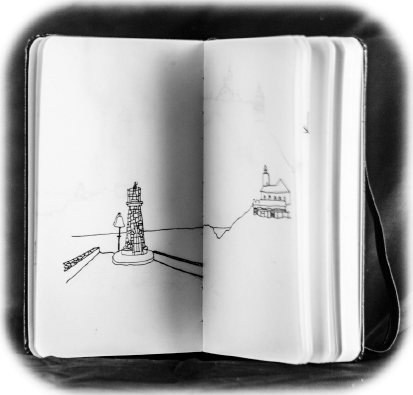
44 40 36.4 N 124 4 45.9 W
Yaquina Head Lighthouse. Brick tower painted white, 28 meters high. Original Fresnel lens, visible at 31 kilometers. Blink pattern: two seconds on, two seconds off, two seconds on, fourteen seconds off.
Yaquina Head
We arrive in Portland, Oregon, to stay with Willey, my aunts boyfriend. In his youth Willey had been an EMT and a member of the Black Panthers; he had a daily routine that included a full breakfast of ham, eggs, wheat semolina, and toast, reading the newspaper, and smoking two or three cigarettes on the balcony of his home.
I dont smoke, but during my first day in that house I spent a long time on the balcony watching the river with its boats and seabirds. I guess thats equivalent to smoking. The following day we took the highway south. My cousintwo meters talland I were squashed in the back seat of the red pickup Willey referred to as my baby. We spent a night at the snow-capped hotel where The Shining was filmed, en route to the crater of an extinct volcano that is now a sapphire-blue lake.
Two years later, when I returned to Portland with my mother and aunt, Willey drove us to the coastal city of Newport. It was September. In that same pickup, we traveled along a wooded highway, stopping at a diner halfway to our destination to eat cupcakes made from locally grown marionberries, served by a couple of kindly old men. I remember that I had my headphones on, and was looking out the window at the forests of bare trees with trunks that were first dark, then white, and finally red. In Newport, I felt Id never before seen an ocean so gray, so cold. Even in summer, the whole city is shrouded in mist, and you have to search for your hotel among the clouds.
*
The great majority of my collections have been failures. When I was small, I used to admire those children who had all the Knights of the Zodiac figures, or the series of collectable toys that came in bags of potato chips. I tried my very best, but never achieved that form of prowess. Two collections that became quite extensive though were my gemstones (I now know they were all varieties of quartz) and my marbles. I was fascinated by the colors and texture of those glass spheres, which is possibly the reason for my choice. My collection of dried flowers also prospered: I still have it, specimens from the gardens that have been part of my life.
My largest collection is of books. As a child I used to read them the day they were bought. Up until adolescence, every book I owned had been read. Then came the moment when I had more books than time to peruse them, and I soon realized that Id probably never read everything on my shelves (there is a Japanese word for it: tsundoku). Im now able to divide that collection into two categories: the books themselves, as objects, and the reading experiences, which can also be coveted and amassed.
*
Even before I ever saw a lighthouse, I dreamed of one; it was abandoned, far from the coast. At the foot of the building was a garden and the house where I lived with my parents. In my childhood dream, I asked my father what hed found during his exploration of the crumbling rooms. Just the skeleton of a bat, he said. I insistently asked for reassurance that the animal was dead, but he only muttered to himself, like someone in the trailer for a horror movie: Dead, but alive. The tip of the tower was visible: a dark garret where the bony hands of the bats skeleton stirred a cauldron containing a potion. The camera then zoomed in on the skull, which in a squeaky voice said, Im brewing my revenge on the person who killed me.
*
In Moby Dick, Melville says that human beings share a natural attraction to water. At one point Ishmael offers an explanation for why people fritter away their savings and bonuses to visit such places as that sapphire-blue lake in the crater of a volcano, or a waterfall so high that the liquid evaporates before reaching the rocks, or a series of pools in the middle of the desert that are home to tiny prehistoric beings, or a natural well deep in the jungle. He explains the amazement we feel at the sight of the color now called International Klein Blue, or the turquoise of the Bacalar lagoon in Quintana Roo. Ishmael suggests that all mens roads lead to water, and the reason why no one can resist its attraction is also why Narcissus, who because he could not grasp the tormenting, mild image he saw in the fountain, plunged into it and was drowned. [] It is the image of the ungraspable phantom of life; and this is the key to it all.
That reflective power of water made Joseph Brodsky believe that if the Spirit of God moved upon its surface, the water would surely reproduce it. God, for Brodsky, is time; water is, therefore, the image of time, and a wave crashing on the shoreline at midnight is a piece of time emerging from the water. If this is true, observing the surface of the ocean from an airplane is equivalent to witnessing the restless face of time.
No civilization bordering the sea, with lakes, or with important rivers has been immune to the need to navigate those waters, to explore the furthest reaches of the oceans, to transport or be carried on the waves. And yet mariners appear as vulnerable aboard their ships as penguins do ashore. Although familiar and necessary, water is also unknowable and menacing. Despite the fact that it makes up the greater part of the human body, it can also take human life.
Next pageFont size:
Interval:
Bookmark:
Similar books «On Lighthouses»
Look at similar books to On Lighthouses. We have selected literature similar in name and meaning in the hope of providing readers with more options to find new, interesting, not yet read works.
Discussion, reviews of the book On Lighthouses and just readers' own opinions. Leave your comments, write what you think about the work, its meaning or the main characters. Specify what exactly you liked and what you didn't like, and why you think so.


